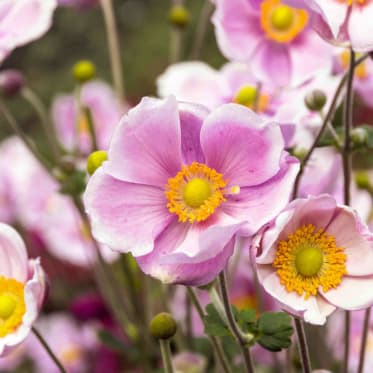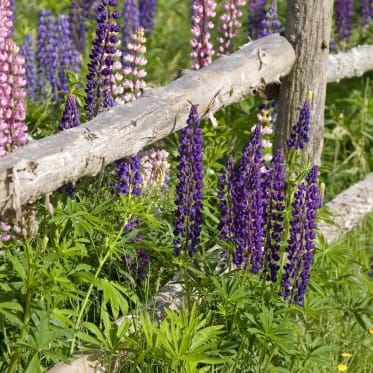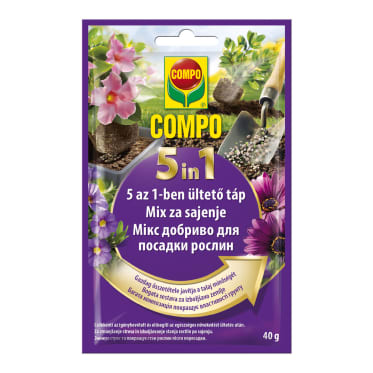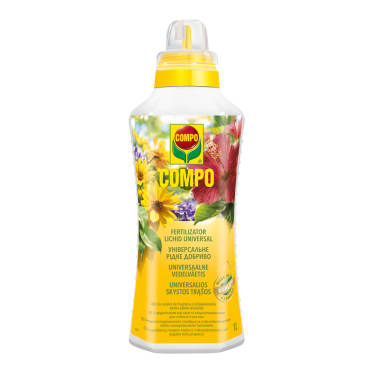Frequent search terms

- COMPO
- Guide
- Plant Care
- Garden
- Garden care
- How to create a perennial bed in your garden
Instructions: Creating your own perennial bed
Perennials are just what you need if you want colourful floral scenery in your garden with minimum effort. There is hardly a plant species as low-maintenance and with as many flowers. Perennials have a long life span and don't need to be re-sown or re-planted every year. Another upside: Thanks to their diversity, the right plant can be found for each spot in the garden. With clever planning, you can enjoy colourful floral abundance all year round. We show you what you should keep in mind when planning your perennial bed.
Table of content

Creating a perennial bed: Combining plants cleverly
The plants should be a good match to ensure that your perennial bed looks good and you can enjoy their floral abundance for a long time to come. The key selection criteria are the flower colour and flowering period. Go for a dominating base colour or different shades, anything goes!
When planning your perennial bed, you should keep the following categorisation in mind: Firstly, there are what are known as accent perennials, tall year-round bloomers that are usually placed in the background and set the tone due to their size. They stand out from the crowd of perennials and can be planted both individually and in small groups. Companion perennials are positioned around the accent perennials in the centre of the bed and round off the visual effect of the perennial bed. Low, often cushion-shaped cover perennials can fill small gaps and are planted at the edge of the bed, creating harmony between the plants.
Perennial species
Examples of accent perennials
| Name | Growth height | Flowering period | Flower colour |
|---|---|---|---|
Aconite (Aconitum) | Up to 1.5 m | Sep-Oct | Blue |
Foxglove (Digitalis) | Up to 1.5 m | Jun-Aug | Red, pink |
Mullein (Verbascum) | Up to 2 m | Jul-Sep | Yellow |
Larkspur (Delphinium) | Up to 2 m | Jun/Jul and Sep/Oct | Blue, white, pink |
Coneflower (Rudbeckia) | Up to 2 m | Jul-Oct | Yellow, white, pink |
Giant Allium (Allium giganteum) | 0.8-1.5 m | Jun-Jul | Purple |
Perennial species
Examples of companion perennials
| Name | Growth height | Flowering period | Flower colour |
|---|---|---|---|
Bleeding heart (Dicentra spectabilis) | 0.6-0.8 m | May-Jun | Pink, white |
Lavender (Lavendula angustifolia) | 0.3-0.9 m | Jul-Aug | Violet, white, pink |
Evening primrose (Oenothera tetragona) | 0.3-0.6 m | Jun-Sep | Yellow |
Perennial species
Examples of cover perennials
| Name | Attributes | Flowering period | Flower colour |
|---|---|---|---|
Aubretia (Aubrieta hybrida) | Evergreen, abundant flowering, cushion-forming | Apr-May | Blue, violet, red, pink |
Siberian waldsteinia (Waldsteinia ternata) | Evergreen, small red berries | Apr-May | Yellow |
Moss phlox (Phlox subulata hybrids) | Abundant flowering, cushion-forming | Apr-May | White, blue-purple, violet, pink, red |
Bugleherb (Ajuga reptans) | Offshoot-forming, candle-like flower heads | Apr-Jun | Blue, white, pink |
The right moment
Perennials can be planted when the weather is milder in the spring. Young perennial plants also manage to gain a foothold in the soil in the autumn.
Step by step guide
Creating a perennial bed
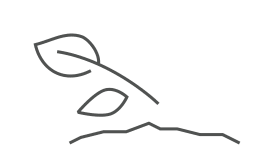
1
Remove any weeds
First remove weeds along with any roots and stones. The more thorough you are in this step, the fewer problems you will have in the years to come. Once weeds have spread through the rootstocks, it is very difficult to get rid of them again.

2
Loosen the soil
Loosen the soil by raking about 15 cm into the ground. This is the only way for the roots to grow into the soil well. Perennials like humus-rich, loose soil, so mix in some potting soil tailored to their needs.

3
Create the edge of the bed and grid
Now create the edge of the bed, e.g. from small granite cobblestones, as a border. Then scatter sand over the entire surface to create a grid (as a guide) made from vertical and horizontal lines with about 20 cm between them so that the plants are not too close together.

4
Position the plants
First lay out the perennials on the bed. This way you can be sure that the plants are well distributed. Then place the tall accent perennials at the back and position the companion perennials around them. Finally, you can position short cover perennials at the edge of the bed.

5
Plant the perennials in the bed
When planting with a shovel or a spade, dig a planting hole that is a little bigger than the root balls. Remove the soil surrounding the balls to make it easier for them to take root. Adding our root activator to the plant holes can also help growth. Only unpot the perennials shortly before planting so that they don't wilt. Water the bed profusely after planting.
Rule of thumb for spaces between the plants
The distance between the plants should be half the height of the perennial. You can sow annual summer flowers to fill the large gaps between the plants at the start and protect against weeds.

Instructions: Planting plan for a year-round bed
If you need some help planning and putting your perennial bed together, we recommend our perennial plant plan. We have compiled a diverse mix of flowering and ornamental foliage perennials, which evolve to become an abundant eye-catcher. The plan is suitable for a bed measuring 200 x 120 cm. Have fun replicating it!
We used these perennials in our bed
| Flowering period | Plant |
|---|---|
Spring | Narcissuses (small orange circles), tulips (small red circles) |
Early summer | 12 Bleeding heart (Dicentra spectabilis) |
High summer | 15 Lady's mantles (Alchemilla mollis), 3 Large-leaved lupine (Lupinus polyphyllus), 14 Purple cranesbill (Geranium magnificum), 5 Leucanthemum (Chrysanthenum maximum), 1 Larkspur (Delphinium hybrids), 9 Woodland sage (Salvia nemorosa), 2 Garden phlox (Phlox paniculata) |
Late summer | 4 Coneflower (Rudbeckia 'Goldsturm'), 10 Soapwort (Saponaria lempergii), 11 White gaura (Gaura lindheimerii) |
Autumn | 13 Bushy aster (Asterum dumosus) |
Winter | Christmas rose (green circles) |
Ornamental foliage | 6 Box balls (Buxus sempervirens), 7 Male fern (Dryopteris filix-mas), 8 European feather grass (Stipa pennata) |
Impressions from our perennial bed
You might also be interested in these topics
Suitable products for your perennial bed












